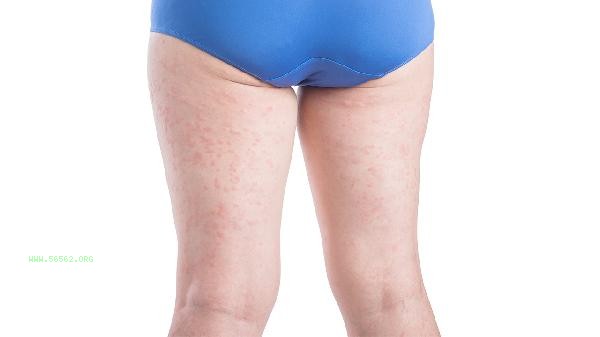Obesity on the inner thigh is usually caused by a combination of fat accumulation, muscle relaxation, hormonal imbalances, genetic factors, and unhealthy lifestyle habits.

1. Fat Accumulation
Long term calorie intake exceeding expenditure can lead to fat deposition in subcutaneous tissue, and the inner thigh is more prone to fat accumulation due to thin skin and less physical activity. Prolonged sitting and lack of targeted exercise may exacerbate local fat accumulation, leading to stubborn obesity.
2. Muscle relaxation
Weak adductor muscles in the thigh can lead to a decrease in skin support. After childbirth or rapid weight loss, it is common for women to lose collagen, resulting in loose skin and a bloated appearance when combined with deep fat. Lack of resistance training can accelerate muscle loss.
3. Hormonal imbalance
Abnormal estrogen levels may promote fat accumulation in the thighs and buttocks, which is common in adolescent, pregnant, or menopausal women. Endocrine diseases such as hypothyroidism can also lower basal metabolic rate, leading to lower limb fat metabolism disorders.

4. Genetic factors
Pear shaped individuals typically carry genetic variations related to fat distribution, making it easier for fat cells to proliferate in the lower limbs. This type of constitution has a lower sensitivity to dietary control and requires special exercise programs to improve.
5. Bad lifestyle habits
Long term wearing of tight pants can affect lymphatic return, cross legged sitting posture can compress blood vessels, and high salt diet can cause edema, all of which can exacerbate visual obesity on the inner thigh. Lack of sleep may exacerbate fat synthesis by increasing cortisol levels.

It is recommended to adopt aerobic exercise combined with adductor muscle training, such as side lying and leg lifting, yoga frog movements, etc. Pay attention to controlling the intake of refined carbohydrates and increasing high-quality protein and dietary fiber in diet. Wear loose clothing to avoid local pressure, and perform a ten minute leg massage daily to promote circulation. If accompanied by menstrual disorders or hirsutism symptoms, seek medical attention to investigate endocrine disorders such as polycystic ovary syndrome.








Comments (0)
Leave a Comment
No comments yet
Be the first to share your thoughts!